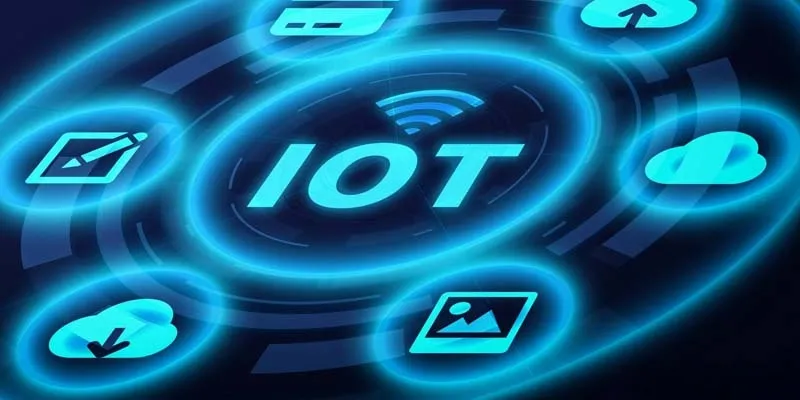Next-Generation IoT is becoming the key driver for the global shift to a smart society. With the rise of AI, 5G, and cloud computing, connectivity is no longer just about “people to people” but has expanded to “things to things.” The challenge is how to connect billions of devices with wide coverage, low power, and intelligent coordination. The mass production of Morse Micro’s second-generation Wi-Fi HaLow SoC marks a milestone. With its features of “long range” and “low power,” it builds a solid foundation for Next-Generation IoT.

Long Range and Low Power: The Dual Engines of IoT
Traditional wireless technologies face a trade-off between coverage and power. They either provide short-range high bandwidth or long-range low data rates. But Next-Generation IoT needs a solution that balances both. Wi-Fi HaLow brings the answer.
Long Range: Operating in Sub-1GHz bands, it reaches more than 1 km and penetrates walls, making it ideal for cities, factories, and farmland.
Low Power: Devices can run for years on batteries thanks to very low standby power.
Massive Connections: It supports thousands of devices at the same time, far more than traditional Wi-Fi, enabling large-scale IoT networks.
These strengths meet the key needs of Next-Generation IoT and prepare the way for edge AI deployment.
Technology Strength: The Unique Edge of HaLow
Wi-Fi HaLow is based on the IEEE 802.11ah standard, designed for “low frequency, long range, low power, high connection.” Compared with other technologies, it finds a better balance.
Compared with Bluetooth: wider coverage for larger spaces.
Compared with Zigbee: higher device capacity, better for complex networks.
Compared with LoRa: higher data rates, making video monitoring and edge computing possible.
This balanced approach makes HaLow a key building block for Next-Generation IoT, not replacing all protocols but filling an essential role in the ecosystem.

Expanding Application Scenarios
With the launch of the second-generation Wi-Fi HaLow SoC, Next-Generation IoT applications are quickly expanding:
Smart Cities: Streetlights, parking, environment sensors, and safety monitoring are connected with wide coverage and low cost.
Smart Agriculture: Soil and climate sensors in fields, livestock tracking, and health monitoring with low-power devices.
Industrial IoT: Thousands of sensors in factories, oil fields, or mines connect in real time for predictive maintenance and efficiency.
Smart Homes and Healthcare: Full coverage in large homes and reliable wearables for medical monitoring.
Edge AI Integration: Devices process data locally, reducing cloud reliance, improving speed, and protecting privacy.
Together, these use cases show a future where everything is connected and intelligent.
Industry and Market Outlook
The rise of Next-Generation IoT is not only a technology shift but also a market reshaping.
Global Trend: By 2030, IoT devices may exceed 25 billion, with low-power wide-area communication as the backbone.
Ecosystem Growth: Wi-Fi HaLow requires cooperation between chipmakers, module suppliers, and application developers.
Morse Micro’s Role: With its second-generation SoC, the company is taking the lead in long-range low-power IoT, strengthening its place in global standards.
With these moves, Next-Generation IoT is moving from concept to reality, from trials to scaled adoption.

Challenges and the Road Ahead
The opportunities are clear, but challenges remain.
Technology Competition: NB-IoT, LoRa, and 5G RedCap compete in the same field, and integration will be important.
Ecosystem Maturity: Standards and user adoption need time to grow.
Business Models: From small pilots to full-scale deployment, sustainable models must be built.
Looking ahead, the mix of Wi-Fi HaLow and edge AI will define Next-Generation IoT. Local processing plus low-power connections improve performance and address privacy concerns. Over time, it will become the foundation of smart societies.
Next-Generation IoT is no longer just a vision—it is becoming reality. Long-range and low-power connections allow billions of devices to truly communicate. The mass production of Morse Micro’s second-generation Wi-Fi HaLow SoC marks the beginning of a new era. Smart cities, smart agriculture, industrial IoT, and edge AI will all benefit from this breakthrough.
In this transformation, EELINK Communication plays a vital role. With over 20 years of experience in IoT hardware and software, EELINK provides trusted solutions for remote monitoring, asset management, vehicle security, insurance services, and cold chain logistics. Its mission is to create value through innovation, making “everything connected” a reality. By meeting customer needs with reliable and efficient technology, EELINK continues to push the boundaries of IoT and lead the way into a smarter future.
